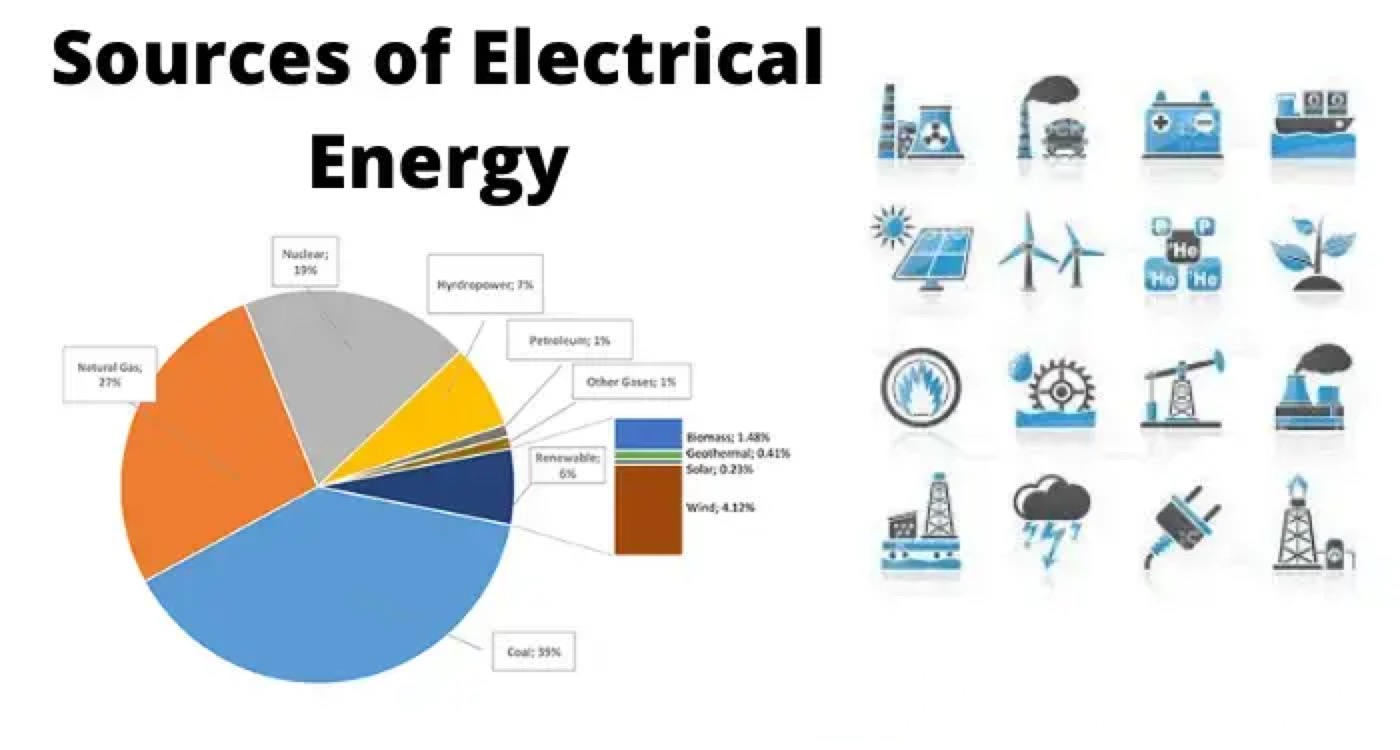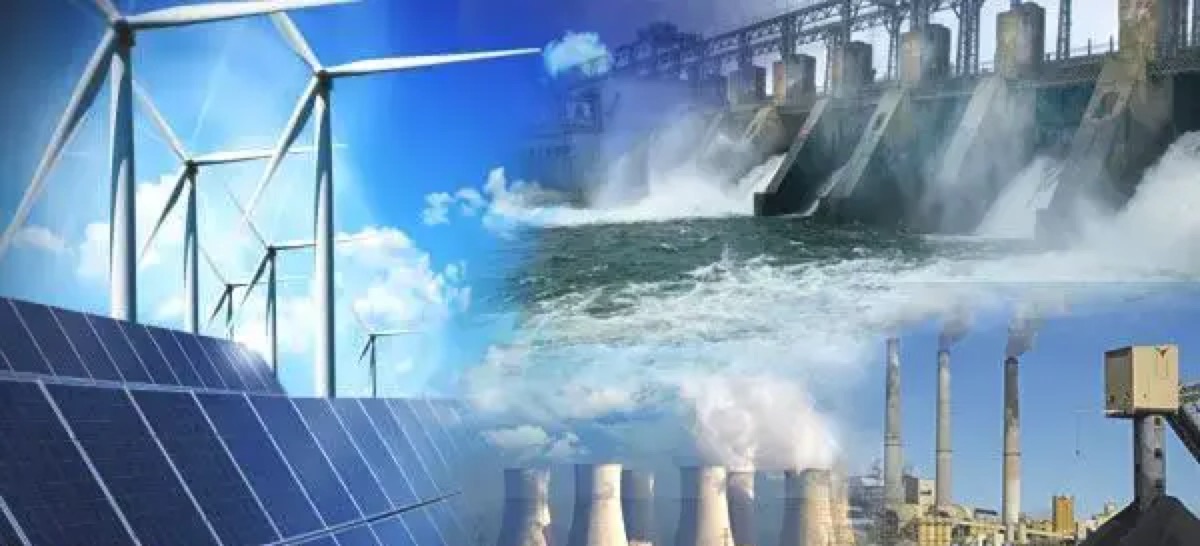Sources of Electrical Energy: How Electricity is Generated

Electrical energy is a form of energy that results from the movement of electrons from one point to another in a conductor. It is a secondary energy source, meaning that it is derived from other primary sources of energy, such as fossil fuels, nuclear power, solar power, wind power, hydropower, etc. These primary sources of energy can be converted into electrical energy by various methods, depending on their nature and availability. In this article, we will explore the main sources of electrical energy and how they are used to generate electricity.
What is Electrical Energy?
Electrical energy is defined as the work done by an electric current or the potential energy stored in an electric field. Electrical energy can be transferred from one place to another by electric circuits and can be converted into other forms of energy, such as heat, light, sound, mechanical motion, etc. Electrical energy is measured in units of joules (J) or watt-hours (Wh).
What are the Main Sources of Electrical Energy?
The main sources of electrical energy can be classified into two categories: renewable and non-renewable. Renewable sources of energy are those that can be replenished naturally or artificially in a short period of time, such as solar power, wind power, hydropower, biomass, etc. Non-renewable sources of energy are those that have a limited supply and cannot be regenerated easily, such as fossil fuels, nuclear power, etc.

The following table summarizes the main sources of electrical energy and their advantages and disadvantages:
| Source | Description | Advantages | Disadvantages |
|---|---|---|---|
| Solar power | The conversion of sunlight into electrical energy by photovoltaic cells or solar thermal plants. | Clean, abundant, renewable, low maintenance cost. | Intermittent, dependent on weather and location, high initial cost, requires large area. |
| Wind power | The conversion of wind kinetic energy into electrical energy by wind turbines. | Clean, renewable, low operating cost. | Intermittent, dependent on wind speed and direction, noisy, visual impact, may harm wildlife. |
| Hydropower | The conversion of water potential energy into electrical energy by hydroelectric dams or turbines. | Clean, renewable, reliable, low operating cost, can store energy. | May cause air pollution and greenhouse gas emissions and may compete with food production and land use. |
| Biomass | High initial cost, and environmental impact, may displace people and wildlife, and may affect water quality and quantity. | Renewable, reduces waste disposal problem, can use existing infrastructure. | Intermittent, dependent on weather and location, high initial cost, requires a large area. |
| Fossil fuels | The conversion of organic matter (such as wood, crops, and waste) into electrical energy by combustion or gasification. | Abundant, cheap, reliable, easy to transport and store. | Non-renewable causes air pollution and greenhouse gas emissions, may deplete resources, and increase prices. |
| Nuclear power | The conversion of nuclear fission energy released by radioactive materials (such as uranium) into electrical energy by nuclear reactors. | The conversion of chemical energy stored in coal, oil, or natural gas into electrical energy by combustion in thermal power plants. | Non-renewable produces radioactive waste, poses nuclear safety and security risks, and depends on uranium availability. |
Nuclear power is one of the most controversial sources of electrical energy, as it has both benefits and drawbacks. On one hand, nuclear power is a reliable, large-scale, and low-carbon energy source that can reduce greenhouse gas emissions and dependence on fossil fuels. On the other hand, nuclear power involves high investment costs, complex waste management, potential accidents, and proliferation issues, and uncertainty about uranium supply.
How is Electricity Generated from Different Sources?
The process of electricity generation varies depending on the source of energy used. However, most methods involve converting some form of mechanical energy into electrical energy by using a generator. A generator is a device that converts rotational motion into electrical current by using electromagnetic induction. The basic principle of electromagnetic induction is that a changing magnetic field induces an electric voltage in a conductor.
As shown in the diagram, most sources of electrical energy require a turbine to spin a generator. A turbine is a machine that converts fluid flow (such as water, steam, or air) into rotational motion. The fluid flow can be produced by various means, such as burning fossil fuels, heating water by nuclear fission, capturing wind or water kinetic energy, etc.
Some sources of electrical energy do not require a turbine or a generator to produce electricity. For example, solar power uses photovoltaic cells to convert sunlight directly into electrical current by using the photoelectric effect. The photoelectric effect is the phenomenon that certain materials emit electrons when exposed to light. Another example is fuel cells, which use chemical reactions to generate electricity by combining hydrogen and oxygen.
Conclusion
Electrical energy is an essential and versatile form of energy that powers our modern society. It can be generated from various sources of energy, each with its own advantages and disadvantages. Some sources are renewable and clean, while others are non-renewable and polluting. Some sources are reliable and efficient, while others are intermittent and variable. Therefore, it is important to balance the environmental, economic, and social impacts of different sources of electrical energy and to develop sustainable and innovative solutions for the future.
Statement: Respect the original, good articles worth sharing, if there is infringement please contact delete.
Blake is an electrical engineering leader with 20+ years of expertise in imaging technology innovation. Former CTO of a global scientific camera manufacturer, he now drives strategic R&D and CCD-to-CMOS transitions at Jingtu Optoelectronics. His career combines technical excellence in precision instrumentation with cross-disciplinary team leadership across global markets.













